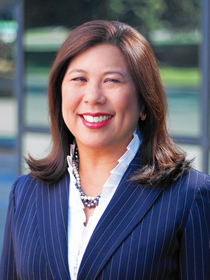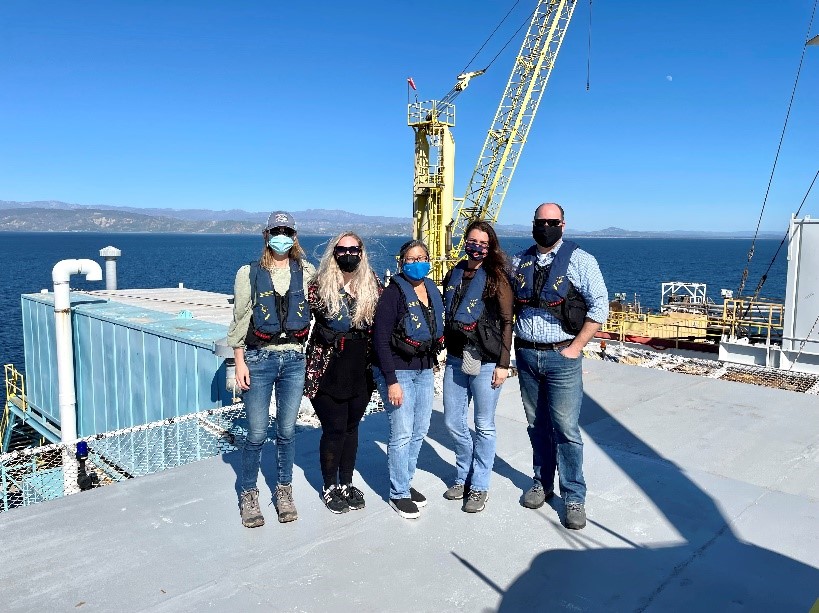You can also view this newsletter as a PDF.

California's Aging Population Highlights
Need to Elevate Care Worker Pay and Conditions
At the intersection of public policy, an aging population, and the number and availability of home care professionals, there exists a crisis that combines an underpaid and underappreciated workforce with a growing number of seniors who cannot afford the care they need to remain at home.
Paid caregiving is essential to older adults’ ability to choose where to live, including aging in place. Caregivers provide direct care in many settings—in private homes, through community-based services like adult day centers, or in residential care homes such as assisted-living facilities or nursing homes.
Care Workforce Challenges and Disparities
The majority of caregiving jobs are held by women, and many are immigrants or belong to communities of color. Women also left the workforce in disproportionate numbers to take on unpaid caregiving for family members during the pandemic.
Caregivers are twice as likely as other Californians to live in low-income households. Direct care workers earn less than half of California’s median annual income, and one in four falls below the federal poverty line. They endure low wages, stress, and an elevated risk of job-related injury, according to California’s Master Plan for Aging (MPA).
The U.S. Bureau of Labor Statistics reports that health care support occupations (such as home health aides, occupational therapy assistants, and medical transcriptionists) had a median annual wage of $29,960 in May 2020, lower than the median annual wage for all occupations in the economy.
In the years ahead, California is expected to face a labor shortage of up to 3.2 million paid direct care workers. A poll by SEIU 2015, the nation’s largest long-term care union, indicated half of nursing home workers are likely to leave their current position in the next year, with poor wages the reason most often cited.
 Even as the number of caregivers declines, need continues to grow. By 2030, the California Department of Finance projects that 10.7 million, or 30 percent, of all Californians will be age 60 or above.
Even as the number of caregivers declines, need continues to grow. By 2030, the California Department of Finance projects that 10.7 million, or 30 percent, of all Californians will be age 60 or above.
Compounding these challenges, a growing number of older adults are finding it difficult to either afford or access the care they need to remain self-sufficient or stay in their home. Generally, this group consists of people caught in the gap between qualifying for Medicaid and having the wealth to pay for home care or quality assisted living. They often are referred to as the “forgotten middle.” A study featured in Health Affairs reported that in 2019, about eight million middle-income seniors were caught in this gap.
Constraints on Economic Participation
The challenges of access to and affordability of quality care also have broader implications for the overall economy.
Depressed wages keep paid caregivers from being full participants in the economy, constrained from contributing to local business and the overall strength of communities. Poor wages and working conditions also keep qualified caregivers from choosing to enter the profession, at a time when they are badly needed.
Meanwhile, many who leave paid jobs to provide caregiving to loved ones find themselves unable to access or afford care that would allow them to return to work. A September 2021 report by Moody’s Analytics warns failure by government to expand access to home and community-based care—allowing those unpaid caregivers who could otherwise take jobs to do so—will diminish the economy’s long-term growth prospects.
Planning for an Aging Population
California’s MPA provides some specific recommendations to assist and support seniors. It also call outs the important need for the development of and support for caregivers:
“The caregiving workforce can be grown through caregiver training and professional development opportunities, along with livable wages, job placement support, and improved job quality. Higher wages will help paid caregivers work toward financial security, alleviate economic disparities, and better reflect the true value of their work.”
In 2021, California’s Future of Work Commission—on which Controller Yee served—issued a final report that recommended to the governor two initiatives to uplift these low-wage sectors:
- Raise wages to at least 75 percent of an indexed, regional living wage measure for 50 percent of workers in the hospitality, retail, and care sectors.
- Create supports for workers to organize in unions and worker associations. Actions to address working poverty should engage and involve leading unions or worker associations in each sector to strengthen worker organization.
Both the MPA and Future of Work Commission reports agree that paying direct care and frontline health care workers a fair and living wage must be a priority of state leaders and external stakeholders. Controller Yee believes achieving this goal is paramount to encouraging enough direct care workers to enter the profession to meet the growing demand California’s aging population requires.
Budgeting for Better Care
California is working to improve and expand on its care economy, for the benefit of older adults requiring supportive services and the caregivers who assist them. This fall will mark the launch of the In-Home Supportive Services (IHSS) Career Pathways Program, designed to improve caregiver knowledge and skills, promote communication between recipients and providers, and improve care outcomes. Care providers will be paid to attend trainings that range from fall prevention and infection control to specialized skills pathways such as caring for patients with dementia or Alzheimer’s disease. Incentive payments also will be offered for meeting certain criteria.
The proposed FY 2022-23 state budget includes continued, historic investments of $1.7 billion over three years for care economy workforce development. This includes $350 million for the California 25x25 Initiative, an effort to recruit, train, and certify 25,000 new community health workers with specialty certifications by 2025.
Pending Legislative Relief
Current legislation to address care needs for the forgotten middle include Assembly Bill 2813 (Santiago), which would establish the Long Term Services and Supports (LTSS) Benefits Program under the Department of Aging to expand care access. The LTSS Benefits Program would provide supportive care to older Californians who need assistance with at least two activities of daily living, as well as people with disabilities. Californians would have to pay into the program for an as-yet unspecified number of years to qualify to receive its benefits. Funds from the program could be used to pay for in-home support services, skilled nursing care, adult day programs, residential care, or the Program of All-Inclusive Care for the Elderly.
Assembly Bill 2394 (Reyes) would establish the 10-person board charged with overseeing the LTSS Benefits Program.
At the federal level, President Biden’s proposed Build Back Better plan would expand home care for older and disabled Americans while improving the jobs and pay of their home-based caregivers. The plan — which also would help 4 million people gain health insurance coverage — passed the U.S. House of Representatives in November 2021 but continues to languish in the U.S. Senate.
Specific and measurable actions to ensure home care workers earn a living wage will not only help increase the standard of living for these workers; it will increase the number of qualified people willing to enter the field, leading to enhanced support and better care outcomes. This is a critical first step to addressing the supportive care needs of seniors now and in the future.
Controller Yee Guides Decommissioning
of Legacy Oil and Gas Facilities
 In October 2021, nearly 25,000 gallons of crude oil spilled from an underwater pipeline connecting Platform Elly to the California shoreline. Unfortunately, this scene is too familiar. In 1969, an oil spill off the Santa Barbara coast unloaded at least 3 million gallons of oil into the Pacific Ocean. In 2015, a ruptured pipeline spilled more than 140,000 gallons of oil near Refugio Beach. Each of these incidents caused fatalities and harm to wildlife, closed beaches, polluted waters, and delivered devastating financial damages to California's coastal-dependent industries.
In October 2021, nearly 25,000 gallons of crude oil spilled from an underwater pipeline connecting Platform Elly to the California shoreline. Unfortunately, this scene is too familiar. In 1969, an oil spill off the Santa Barbara coast unloaded at least 3 million gallons of oil into the Pacific Ocean. In 2015, a ruptured pipeline spilled more than 140,000 gallons of oil near Refugio Beach. Each of these incidents caused fatalities and harm to wildlife, closed beaches, polluted waters, and delivered devastating financial damages to California's coastal-dependent industries.
History of Offshore Leasing in California
Environmental groups, lawmakers, and the public have loudly protested the continuation of offshore oil and gas activities for decades. However, challenges to ending offshore oil and gas production are deeply rooted in California history.
In 1898, the first oil well was drilled into California’s tidelands in Santa Barbara County. At the time, no laws existed governing the extraction of oil and gas from state lands. In 1938, the Legislature created the California State Lands Commission (SLC), now chaired by Controller Yee, and granted the Commission all state-owned tidelands and submerged lands from the mean high tide line on the California coast out to three nautical miles offshore. This jurisdiction includes all offshore oil and gas platforms and related infrastructure (like pipelines) in state waters. Under the Public Trust Doctrine, SLC holds these lands in trust for the people of California.
The Cunningham-Shell Tidelands Act of 1955 decreed that offshore oil and gas operators may continue producing oil and gas in state waters as long as it is economically feasible—essentially indefinitely. This law poses a major hurdle in efforts to transition to a renewable economy, as all active offshore leases in state waters were issued after Cunningham-Shell. Unless an operator voluntarily discontinues production or defaults on a lease, the only way to end existing offshore oil and gas operations and begin decommissioning is for the state to buy out these leases. SLC cannot pull the plug on offshore oil and gas without significant legal costs and uncertainties.
Moving Toward Renewable Energy
Controller Yee believes the renewable energy transition must be deliberate and thoughtful, using data to guide the decision-making process. California cannot successfully move forward without a concrete understanding of the fiscal impact, including unrealized state revenues, anticipated lost operator profits, and related workforce impacts, as well as costs to plug, abandon, and decommission oil and gas infrastructure. Controller Yee is sponsoring legislation designed to do exactly this. Assembly Bill 2257 (Boerner Horvath) protects California taxpayers, guides the state on the pathway to a fossil fuel-free future, and ensures a careful, comprehensive, and fiscally responsible approach to ending offshore oil and gas operations.
Other well-intentioned legislation to abruptly shut down existing platforms was introduced in response to the most recent spill. However, this rapid approach would create significant legal consequences for the state for breaching contracts without cause, result in hundreds of millions in decommissioning liabilities, eliminate a major state revenue source without a replacement plan, and leave workers jobless without a strategy for a clean energy workforce transition. Additionally, this proposal would have no impact on federal pipelines moving through state waters, which were the origin of the October 2021 spill.
No oil and gas leases have been issued in state waters since 1968. The California Coastal Sanctuary Act of 1994 expressly prohibits the state from issuing any new leases, but public opinion had long been trending in that direction. In 2021, Senator Dianne Feinstein and Congressman Jared Huffman introduced joint legislation that would replicate the Sanctuary Act in federal waters.
 Addressing Legacy Oil and Gas Activities
Addressing Legacy Oil and Gas Activities
Today, only three actively producing platforms remain in state waters: Eva and Emmy off the shore of Huntington Beach, and Esther off Seal Beach. Platform Holly in Santa Barbara County is no longer producing and currently is being decommissioned. There are additional oil operations off the Long Beach coast, outside of SLC’s jurisdiction. The U.S. government retains jurisdiction over submerged lands from the state water boundary to 12 nautical miles from shore, which includes 23 platforms in federal waters off the California coast. Pipelines from these platforms in federal waters pass through state waters to transport oil to facilities onshore, for which the federal government must obtain leases from SLC.
Active operations at Eva, Emmy, Esther, and the Long Beach Unit contribute approximately $90 million per year in revenue to the state’s General Fund, not including associated local and state tax revenues. California’s coastal economy employs 12.3 million people annually with earnings of nearly $883.5 billion, generating more than $2 trillion in gross domestic product. The economic and environmental risks of yet another oil spill demand innovation to accelerate the end of offshore oil and gas development and the transition to 100-percent renewable energy.
SLC uniquely understands what it takes to safely and effectively shut down offshore platforms. Over the last six years, SLC has facilitated the termination of 10 offshore oil and gas leases, returning 20,000 acres to the Coastal Sanctuary. Most recently, SLC completed plug and abandonment work at Piers 421 in 2019 and will begin decommissioning activities this year. They are actively managing plug and abandonment at Platform Holly, which was delayed due to the COVID-19 pandemic and is now expected to be completed in 2023.
In her role as an SLC Commissioner, Controller Yee led the efforts to shut down Platform Holly and declared vocal opposition to any further expansion of oil drilling. Controller Yee continues to lead the continued work necessary for a broader focus to a renewable energy economy.